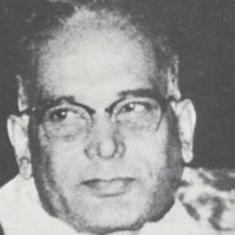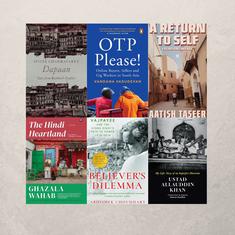This Monday, October 10, was the first time in 13 years that neither Roger Federer nor Rafael Nadal graced the top four of the ATP men’s singles rankings. On Monday, October 17, there will be yet another reshuffle, with both players slipping out of the top five as well. It’s not just the end of an uninterrupted timeline. It’s apocalypse.
That Federer would drop out of the top 10 for the first time in 14 years was something everyone knew since the Swiss withdrew from the season after Wimbledon. But that Nadal, dogged by injuries, would follow suit was unexpected.
The decline of the Federer-Nadal duopoly
And yet, did we really not see it coming? In all these years of the intertwining of Federer and Nadal, while Nadal has had slipped in and out of focus with injury issues, Federer was the one manning their fort of dominance. Of course, every time that Nadal made a comeback after an injury, he made it count. In those phases he won a succession of matches and titles, as if to show that he wasn’t done with tennis and that his fans and his audiences shouldn’t be done with him either.
In 2016, though, there’s been no such spark from him. His bleak performances in his last two tournaments – in Beijing and Shanghai – where he was upset by Grigor Dimitrov and Viktor Troicki, respectively, players he’d never lost to before, have put a big question mark over his continuance at the top.
Waiting and watching for Federer to return in January seems much more of a certainty. However, this aspect of Nadal’s struggles does suggest there’s a catch to the Federer scenario. If even someone like Nadal – who’s gone on to rack up Slams after rebounding from injuries – can falter now, can Federer, who’s never sat out this long from the tour, ensure a smooth return?
Five years older than the Spaniard, Federer will be 35 when he comes back. Pushing 36, in fact. Moreover, his game, which had started to slow down even before he injured his knee, will be a huge factor.
Federer played only five tournaments after surgery to repair the torn meniscus on his left knee. Two of them were on clay, in Monte Carlo and Rome, and three were on grass, the surface on which he’s at his best. Wimbledon was one of these three grass events. He had expected to win there and had put in a worthy performance. He had not, obviously, expected to lose to Milos Raonic in the semi-final. The manner of that defeat – after being two sets up – essentially led to the decision to sit out the rest of the year.
A golden opportunity
It is necessary to move away from the emotional hand-wringing for the decline of the Federer-Nadal duopoly that has long dominated men’s tennis, and to celebrate the opportunity that this presents to the younger generation to step up. (Not that we should forget Novak Djokovic and Andy Murray.)
That younger generation has been spoken about a lot in the past two or three years. It includes not just Dimitrov, Raonic, David Goffin and Kei Nishikori to the likes of Dominic Thiem, Lucas Pouille, Nick Kyrgios, Alexander Zverev, Karen Khachanov and Borna Coric presently. Some of them have just started to do well. Some of them have not lived up to these expectations. And some, if they have proved their mettle, haven’t managed to prove the premise consistently.
The reasons? Intermittent injuries, and loss of form, to name two. Or because of the unwillingness to do so, as Kyrgios so often keeps demonstrating. The latest episode of his eccentricity came in his second round match against Mischa Zverev, where he was caught by the mic asking the umpire to to start play early so “I can finish this match and go home.”
Idiosyncrasies and Kyrgios will continue to co-exist. What won’t remain the same is the time available to the younger lot to fuel their legacies, separate and distinct from their predecessors. The likes of which not only include the 17- and 14-time Grand Slam champions, but also Djokovic and Murray, though the Scot’s proving to be an exception to the others’ travails.
A new top 10?
For most parts of the last 15 years, rankings in men’s tennis had ceased to be a baton to be passed around. The year 2016 has been a deviation, underscoring the depth of the feat that had been achieved. Federer, Nadal and Djokovic – in his own way – symbolise constancy and longevity. The biggest obstacle to the younger generation’s coming of age was its inability to demolish their domination, which is not the case this year.
Federer is not in the immediate picture, Nadal’s game has been breaking psychologically and Djokovic is suffering from motivational withdrawal. More jostling between the contenders is set to take place by the end of the ongoing Shanghai Masters and the few remaining tournaments this season. Expect to see a changed top 10 soon.










